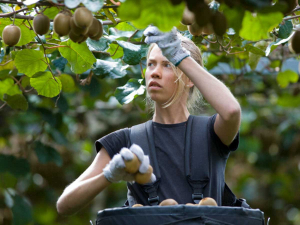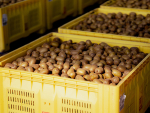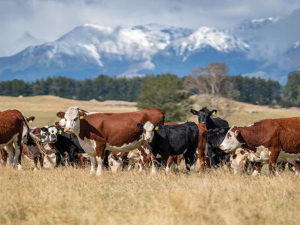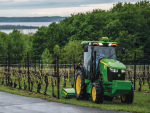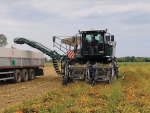New Zealand’s 2021 kiwifruit harvest has kicked off with the commercial crop being picked this morning in Gisborne and more kiwifruit to be picked across New Zealand over the coming days.
The 2021 season is forecast to be another record-breaking year with more kiwifruit produced than ever before, overtaking last year’s record of 157 million trays of export Green and Gold.
On average, each tray has around 30 pieces of kiwifruit.
The Gold variety is usually picked first, followed by Green kiwifruit in late March. Harvest peaks in mid-April and runs through until June.
In additional to the Green and Gold kiwifruit, consumers can look forward to Zespri’s Red kiwifruit which will also be picked for supermarket shelves in New Zealand and some overseas markets this year.
New Zealand has some 2,800 growers who produce kiwifruit across 13,000 hectares of orchards between Kerikeri in the north and Motueka in the south.
Nikki Johnson, chief executive of New Zealand Kiwifruit Growers Inc. (NZKGI), says the lead up to harvest has been a mixed bag for growers.
“This year has been devastating for a small number of growers whose crops in Motueka and other isolated areas were hit by hail,” Johnson says.
“On the other hand, the season is shaping up to produce high quality kiwifruit which means consumers can anticipate a great tasting product coming to supermarket shelves.”
Carol Ward, Zespri’s chief grower, industry and sustainability officer, says the wider kiwifruit industry’s ability to adapt and work closely together last season meant the industry could safely pick, pack and ship a record-breaking crop of fruit, and expects the 2021 season will be no different.
“Growers and the wider kiwifruit industry are working hard to make sure consumers across the world can enjoy fresh, healthy fruit like our kiwifruit once harvest begins.
“We’re encouraged by the strong demand we’re seeing for our fruit, and we’ll continue to closely monitor the Covid-19 environment and it’s impacts both in New Zealand and abroad as we begin shipping this year’s crop,” says Ward.
The forecast record crop means there are a lot of jobs available in picking and packing.
Up to 23,000 seasonal workers will be in orchards and packhouses during the April peak.
With border closures reducing the number of backpackers and Pacific Islanders from the RSE scheme, the industry will welcome even more Kiwis to work in the industry.
NZKGI says that almost all packhouses have told them that they will pay at least the living wage of $22.10 per hour.
Kiwifruit picking is also expected to exceed the living wage with an average of $24 per hour paid last year when the minimum wage was $18.90 per hour.

